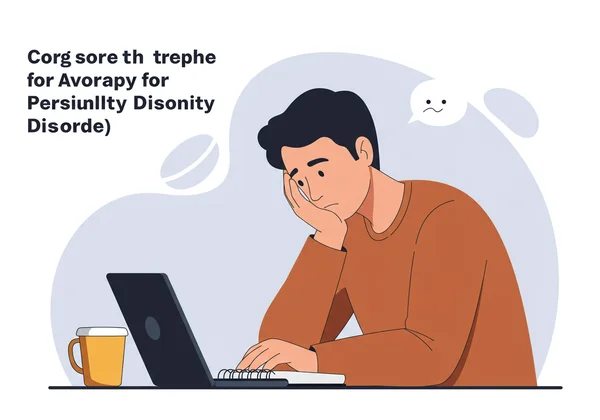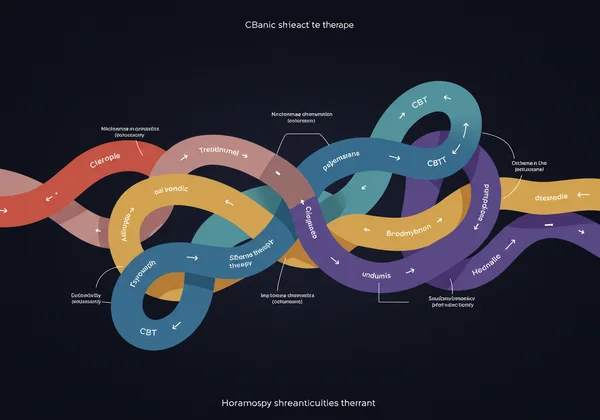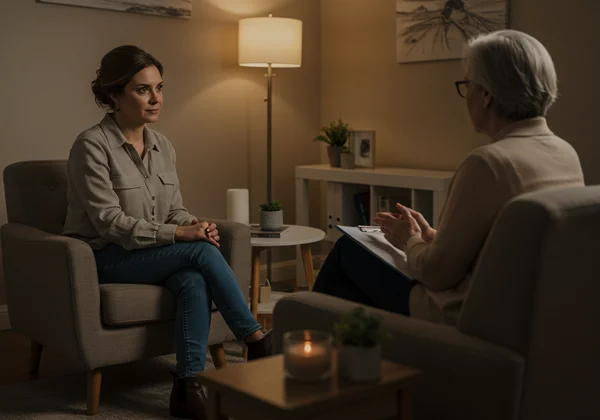AVPD Test & Therapy: Understanding Treatments for Avoidant Personality Disorder
Feeling overwhelmed or unsure about seeking therapy for Avoidant Personality Disorder (AVPD)? You're not alone. The very nature of AVPD can make reaching out for help feel like an impossible task. If you've ever found yourself wondering, What are the symptoms of AVPD?, and recognized some traits in yourself, considering the next steps can be daunting. Perhaps you've taken a confidential avpd test online to gain some clarity. This guide will gently walk you through what to expect from professional help, demystifying the process and empowering you to take the next step in your healing journey. Understanding the path ahead can transform fear into a feeling of hope and control.

Understanding Therapy for Avoidant Personality Disorder
Therapy for AVPD is not about changing who you are. It's about understanding the patterns that hold you back and developing new, healthier ways to relate to yourself and others. It is a collaborative process undertaken in a safe, non-judgmental space, designed to help you gradually face your fears and build the connections you crave. The journey begins with understanding its core purpose. Before diving in, taking a moment for self-reflection with an online AVPD test can provide a useful starting point for discussion.
AVPD Therapy Goals
The primary goal of therapy is to reduce the distress caused by AVPD symptoms and improve your overall quality of life. A therapist works with you to gently challenge the deep-seated fears of rejection and criticism. Key objectives often include building self-esteem, improving social skills, and learning to manage anxiety in social situations. The aim is to help you move from a life dictated by avoidance to one guided by your own values and desires, fostering genuine connections along the way.
The Role of Professional Help
While self-help resources are valuable, the core challenges of AVPD—fear of judgment and deep-rooted insecurity—can make progress alone incredibly difficult. A trained therapist provides a unique relationship built on trust and unconditional positive regard. This therapeutic alliance becomes a safe laboratory where you can explore your fears, practice new behaviors, and experience an accepting relationship, often for the first time. This professional guidance is crucial for untangling the complex emotional knots tied to AVPD.
Common Therapeutic Approaches for AVPD
No single therapy fits everyone, but several evidence-based methods have proven effective for treating AVPD. A good therapist will often integrate elements from different approaches to tailor a treatment plan specifically for you. Understanding these common modalities can help you feel more prepared and informed as you begin your search for support.

Cognitive Behavioral Therapy (CBT) for AVPD
Cognitive Behavioral Therapy (CBT) is one of the most widely recognized treatments. It operates on the principle that our thoughts, feelings, and behaviors are interconnected. For AVPD, CBT focuses on identifying and challenging the automatic negative thoughts that fuel avoidance, such as "If I go to the party, everyone will think I'm awkward," or "If I speak up, I'll be criticized." A therapist helps you examine the evidence for these thoughts and gradually replace them with more balanced and realistic ones. This cognitive work is paired with behavioral experiments, like attending a social event for a short period, to slowly build confidence and reduce anxiety.
Schema Therapy for Deep-Rooted Patterns
Schema Therapy is particularly effective for personality disorders because it goes deeper than immediate thoughts and behaviors. It addresses "lifetraps" or schemas—pervasive, self-defeating patterns of thinking and feeling that begin in early childhood. Common schemas in AVPD include Defectiveness/Shame, Social Isolation, and Failure. Therapy involves recognizing these schemas, understanding their origins, and working to heal the emotional wounds associated with them. This approach helps you nurture your inner "healthy adult" voice to challenge these entrenched patterns.
Psychodynamic Therapy and Attachment
Psychodynamic therapy explores how your past experiences, particularly early relationships with caregivers, shape your present-day behaviors and feelings. For individuals with AVPD, this often involves examining early attachment patterns that may have led to a core belief that connection is dangerous or will inevitably lead to rejection. By understanding these unconscious influences in the safe context of the therapeutic relationship, you can gain profound insight and begin to form more secure and fulfilling attachments in your adult life.
Other Complementary Therapeutic Modalities
Beyond these core approaches, other therapies can provide valuable support. Group therapy, while initially intimidating, offers a unique opportunity to practice social skills in a structured, supportive environment with others who understand your struggles. Mindfulness-based therapies can help you learn to observe your anxious thoughts without being controlled by them. For many, a free AVPD test can be the first step toward recognizing these patterns and seeking out the right kind of help.
Your Healing Process Begins: What to Expect in Therapy Sessions
Knowing the theories is one thing, but understanding the practical reality of therapy sessions is another. The process is a journey, not a race. It unfolds in stages, beginning with finding the right person to guide you and slowly building a foundation of trust. Remember, the pace is set by your comfort level.

Finding the Right Therapist
Finding a therapist who feels like a good fit is the most critical first step. Look for professionals who specialize in personality disorders or social anxiety. Many therapists offer a free initial consultation, which is a great opportunity to ask questions about their experience with AVPD and see if their communication style resonates with you. Feeling safe and understood is paramount, so trust your instincts during this selection process.
Building Trust in Early Sessions
The first few sessions are all about building rapport. Your therapist will focus on creating a safe and validating environment where you feel comfortable sharing your experiences without fear of judgment. You won't be pushed to confront your biggest fears on day one. Instead, you'll likely discuss your history, your current struggles, and your goals for therapy. This initial phase is crucial for establishing the trust needed for deeper work later on.
Setting Goals and Therapy Duration
Therapy is a collaborative process. Together with your therapist, you will set clear, achievable goals. These might start small, like making a phone call you've been avoiding, and gradually build toward larger objectives, like initiating a conversation with a coworker. The duration of therapy varies greatly depending on individual needs, but it is typically a long-term process. Consistency is more important than speed. An online self-assessment can help clarify which areas you want to focus on.
Overcoming Resistance to Healing
It's natural to feel resistance during therapy, especially with AVPD. The desire to avoid difficult emotions or situations may surface, leading you to consider canceling sessions or downplaying your struggles. A good therapist understands this and will help you work through it with compassion. Recognizing this resistance as part of the healing process is a powerful step in itself. Committing to the journey, even when it's uncomfortable, is how true change happens.
Taking the First Step: Embracing Your Road to Recovery
Embarking on therapy for AVPD is a courageous act of self-compassion. It's an investment in a future where you feel more connected, confident, and free. The journey involves understanding your patterns, learning new skills, and building a trusting relationship with a professional who can guide you. While the process may have its challenges, every step you take is a victory against the avoidance that has held you back.

If you're just beginning to explore these feelings, knowledge is your first and most powerful tool. Understanding your own traits is a crucial first step. You can start the free assessment on our site to gain confidential, instant insights. It's a simple, private way to begin your journey of self-discovery and move toward a more fulfilling life.
Frequently Asked Questions About AVPD Therapy
How can I help myself if I have avoidant personality disorder? Self-help starts with self-awareness. Learning about AVPD, practicing mindfulness to manage anxiety, and journaling about your thoughts and fears can be beneficial. Setting very small, manageable social goals can also help. However, professional therapy is highly recommended to address the deep-rooted patterns of AVPD.
What triggers an avoidant personality? Triggers are often social situations that involve the potential for evaluation, criticism, or rejection. This can include job interviews, public speaking, meeting new people, dating, or even disagreeing with a friend. The core trigger is any situation that activates the deep-seated fear of not being good enough.
What's the difference between therapy for AVPD and social anxiety? While there's overlap, therapy for AVPD often goes deeper. Therapy for social anxiety may focus more on managing fear in specific performance situations. AVPD therapy also addresses the pervasive feelings of worthlessness, shame, and the deep-seated belief that one is fundamentally unlikable, which affects all areas of life, not just social events. Getting a baseline understanding through a confidential quiz can help clarify which issues are most prominent for you.
How do I know if therapy is working for my AVPD? Progress can be slow but is often marked by subtle shifts. You might notice you're slightly less critical of yourself, or you might take a small social risk you would have avoided before, like making eye contact with a cashier. Other signs include feeling more understood by your therapist and being more open in your sessions. Celebrating these small victories is a key part of the process.